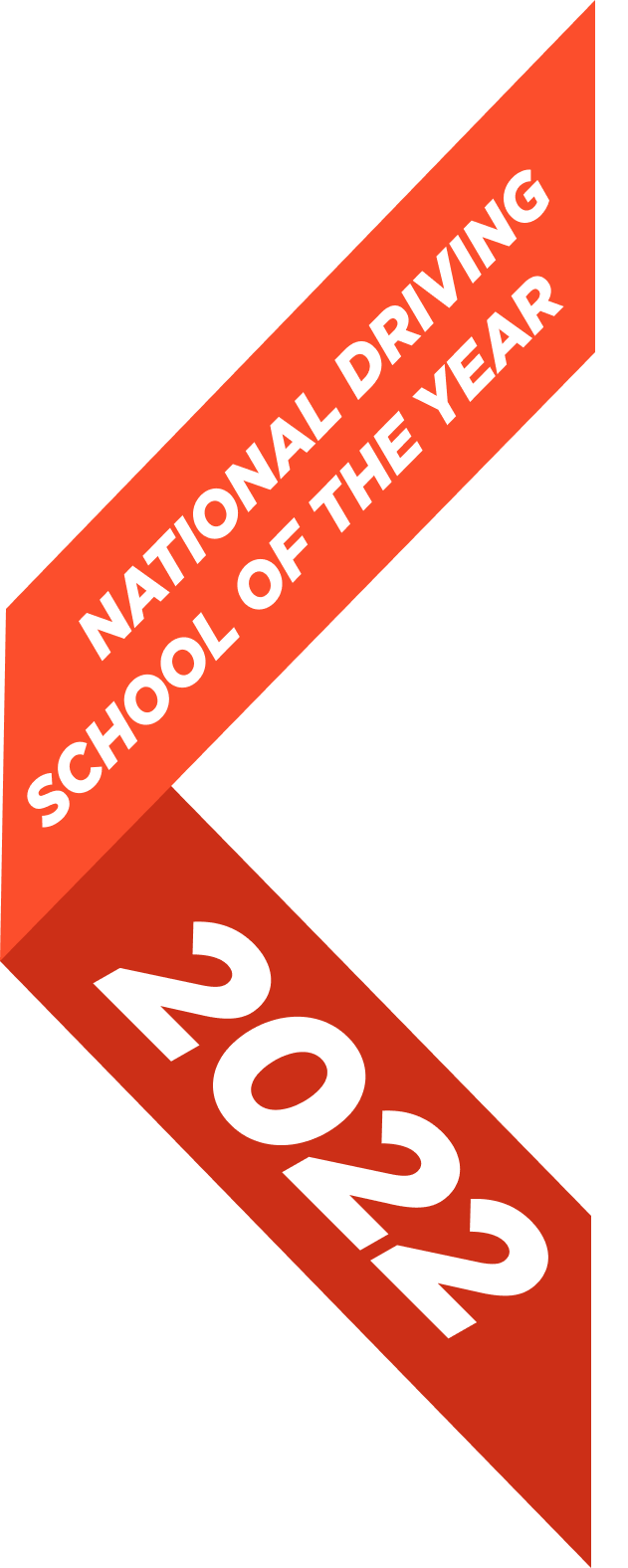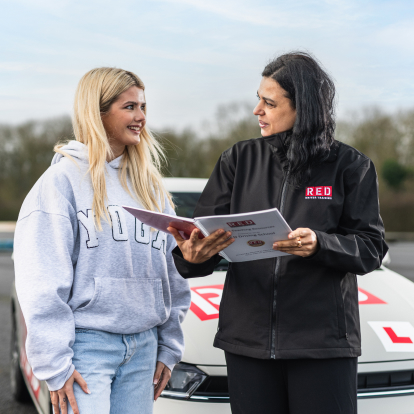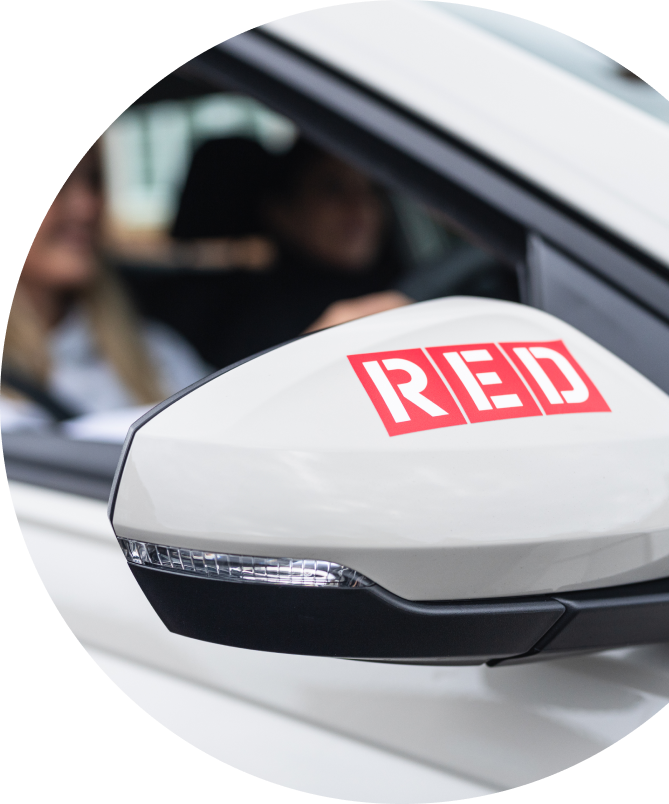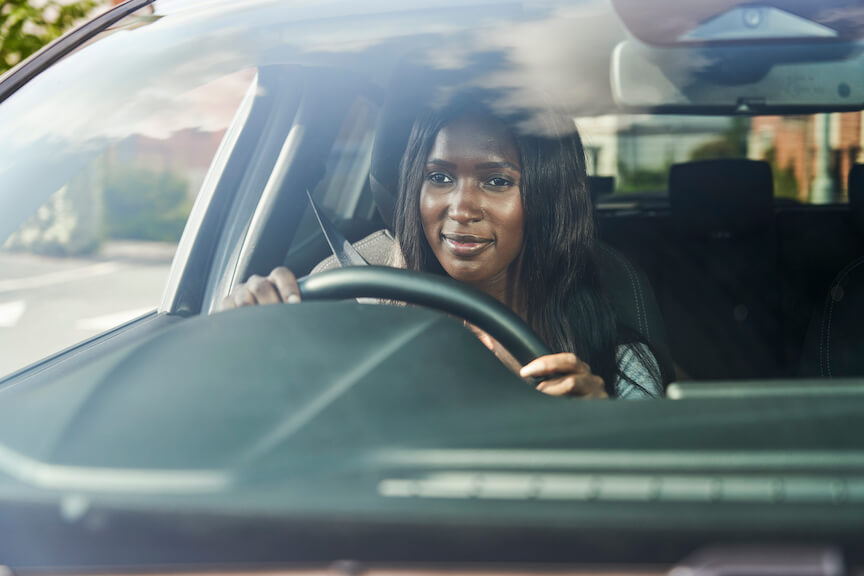


Before you book a test slot, it’s worth knowing whether you’re ready to take your practical driving test at all. There’s no real hard and fast rule for how many hours of practice you should have, because everyone learns at a different pace – and that’s okay. But generally speaking, you should be able to:
Importantly, you must have a valid theory test certificate to be able to take a practical test. These are valid for two years from the date you passed – if this has expired, you’ll need to retake your theory test.
Fundamentally, there are two people who will know when you’re ready for your driving test – you, and your driving instructor. If you’re feeling confident that you’re driving safely, have an open and honest conversation with your instructor about when they think you’ll be ready for your test.
Learn more about being ready for your driving test.
Your instructor may offer to run a mock driving test for you in one of your lessons – RED recommends taking them up on this. Doing a mock test can also help to settle any test day nerves, as you’ll feel more prepared.
In a mock driving test, your Approved Driving Instructor (ADI) will act as the examiner, and will assess you on exactly the same criteria as would be expected of you in an actual test. Mock tests are the best way of knowing what your chances of passing a real driving test are.
To book a practical driving test, it’s as simple as going to the official Driver and Vehcile Standards Agency (DVSA) website and booking directly through them. This is the best way of ensuring that you’re not paying more than the standard driving test fee, which you might do if you purchase a test slot via 3rd party reselling sites.
Wait times for driving tests in the UK can be quite long, so it’s best to keep an eye out for cancellations in your area to find an earlier date if it suits you to do so.
To be able to book your practical driving test through the DVSA, you’ll need to have the following items on hand to be able to book:
Note that you won’t be able to book a driving test at all if you don’t have a valid provisional licence or theory test pass certificate. You may also want to ask your driving instructor which test centre they’d recommend in your local area, as you’ll need to select this at the time of booking and it’s likely you’ll be using their car for your test.
The day of your driving test can be nerve-wracking – but with plenty of preparation and information about what to expect, you can feel more settled, which will increase your chances of passing.
We recommend arriving at your test centre at least 15 minutes before your test start time. This will give you plenty of time to organise the administrative part of your test without rushing, which can really add to the stress. On your test day, you’ll need to bring with you:
When your examiner is ready, they’ll take a note of the above items, and ask you whether you’d like your instructor to come along for your test. You may prefer for them to come along for support, however they won’t be able to offer you any guidance throughout the duration of your test.
Please note: if you fail the eyesight check, the test will be cancelled and you’ll have to book another one (your booking fee won’t be refunded). You must remember to bring your glasses with you if you need them to see properly.
The next part of your test is called “show me, tell me”. This part of the test is designed for you to demonstrate that you understand how to check your car is working properly, and that you know the basic functions of the car to keep yourself and others safe while you’re driving.
The examiner will ask one “show me” question, and one “tell me” question. If you get one wrong, don’t panic! You won’t fail your test, however your examiner will give you one Minor fault for each incorrect answer.
Once show me tell me is complete – your examiner may choose to ask these while you’re driving – it’s time for the actual driving part of your test. For approximately 40 minutes, you will:
If you’re doing an extended driving test due to a previous driving ban, your test will take 70 minutes instead of the 40 minutes as with the regular driving test.
You will have practiced your reversing manoeuvres numerous times with your instructor during your lessons – during your test, your examiner will ask you to perform just one of them. The four reversing manoeuvres are;
It is possible to get minor faults on your reversing manoeuvre – for example, if your wheel clips the kerb – but it’s important to note that you can also get a major fault if you lose control of the car (for example by fully mounting the kerb) or if you forget to check your mirrors and blind spots. A major fault will mean that you fail your test altogether.
In the independent driving portion of your test, your examiner is testing you on your ability to understand and adhere to road signs and markings, that you can handle junctions and lane changes, and crucially that you stop at traffic lights and pedestrian crossings without being prompted by someone else to do so.
And of course it goes without saying, they’ll be checking that you’re doing all of this whilst observing any speed limits in the area – so keep an eye on that speedometer! Once the independent driving section is complete, so is your driving test… and it’s time for your results.
Once the 40 minutes has passed, your examiner will ask you to drive back to the test centre, where they’ll immediately tell you whether you’ve passed or failed. To get a pass, you must have:
Whether you pass or fail, the examiner will explain your faults so that you can understand where you went wrong, and what you need to be careful of once you’re out on the road on your own.
If you’ve passed, you’ll receive an email with your results. Your examiner will offer to get your full UK driving licence sent to you directly, which typically arrives three weeks after your test pass date. Alternatively you may choose to apply for the full licence yourself, through the official DVSA website.
If you receive even one major fault – which is a serious or dangerous error – then you will automatically fail your test. Your test will continue until the end unless the examiner decides that it isn’t safe for the test to continue. You will need to retake your test if you make a mistake that either poses a risk but doesn’t cause immediate danger (eg. failing to stop at a stop sign) or cause actual danger to yourself, the examiner or others (eg. pulling out in front of an oncoming car).
Learn more about what to do if you fail your driving test and see a list of reasons you could fail your practical test.
Being prepared for your driving test
At RED, we understand that the day of your practical driving test can bring quite a bit of anxiety for many drivers – which is why we advocate for plenty of practice before drivers apply to take their test. A part of this is ensuring you’ve had as many lessons with an Approved Driving Instructor (ADI) as you need to feel confident on the road. The other part of this is getting in as much theoretical learning as possible, even after you’ve got your theory test certificate.
Our Learn To Drive With RED app makes learning on the go easy. It’s the driving instructor in your pocket, there for you in between lessons with your instructor. It features test tips, video guides and easy progress tracking so you know when you’re getting close to being ready for your test.
Learn To Drive With RED is free to download on iOS and Android – RED customers have indefinite access, and the app is open to a 30-day free trial for users who haven’t booked driving lessons with RED. Try it today!


No, it isn’t possible to do your practical driving test without having first passed your driving theory test. You’ll need to provide your theory test pass certificate number when you book your driving test. Your theory test certificate is valid for 2 years from your pass date, so you’ll need to retake this if it has expired.
On the day of your practical driving test, it’s essential that you bring your provisional license photo driving card, your theory pass test certificate and a suitable car for your test. This can be any car that is roadworthy and that you’re insured to drive in, whether it’s your own, or your driving instructor’s. If you need glasses to see properly, make sure you have those to hand too so that you don’t fail the eyesight test - you won’t be able to take the rest of the test if you do. It’s also ideal for you to have your booking confirmation email, just in case there are any issues.
In the UK, a car driving test costs £62 on weekdays, and £75 on evenings, weekends and bank holidays. It’s always best to check the most up-to-date information on the official DVSA site with regards to cost. RED recommends booking your test directly with the DVSA. Please be aware of other sellers offering inflated prices or promising to help you jump the queue.
The standard practical driving test in the UK takes approximately 40 minutes in total, including the eyesight check, show me tell me, actual driving - guided and independent -and reversing manoeuvres. If you’re taking the extended driving test (typically due to a previous driving ban) then this will take 70 minutes in total.
If you’ve passed your practical driving test, yes you’ll be able to drive legally straight away. Your examiner will provide you with a test pass certificate, which acts as a temporary solution until your full UK driving licence card arrives in the post. This can take a few weeks to arrive.
Yes, you can change your practical driving test appointment via the official GOV.UK website or by contacting the DVSA customer service on 0300 200 1122. The rules for changing your test date are that you must change it at least 3 full working days before your test date, and you can’t change it more than 6 times.

We have decided to put together a series of posts giving you tips about how to complete your manoeuvres in your practical test.
Read more